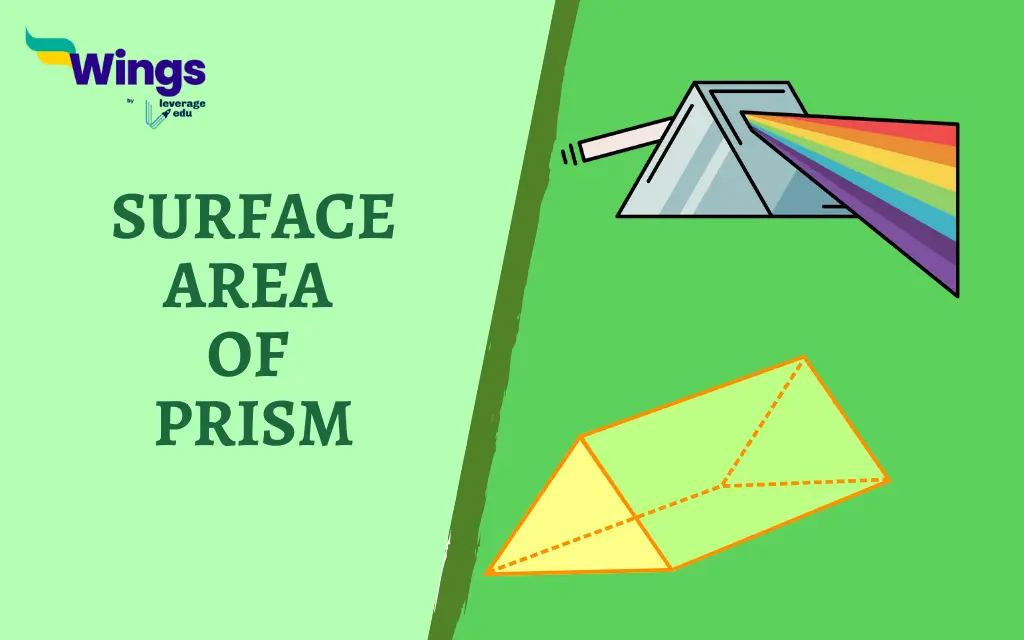A prism is a three-dimensional (3D) shape that has two identical ends and flat sides. Imagine a triangle, like the ones you draw in math class. Now, picture that triangle being copied over and over again in a straight line. You need to stack them one behind the other until you have a long shape with a triangle at both ends. Furthermore, the two triangle faces are called the bases, and the sides that connect them are rectangles. Just think about a stretched-out triangle that has a uniform cross-section all the way through. Read on to learn more about the Surface Area of Prism along with the Formula and Examples.
What is the Formula for the Surface Area of a Prism?
The Surface Area of a Prism is the total area covered by all its faces. Think about a Tent you might stay in while camping! Moreover, the Formula to calculate its Surface Area is adding the areas of all its surface sides. In addition, the Formula for the Surface Area of a Prism is:
Surface Area = 2B + Ph
Wherein,
- B is the Area of the Base of the Prism
- P is the Perimeter of the Base
- h is the Height of the Prism
Steps to Calculate the Surface Area of a Prism
In addition, here are the Steps to calculate the Surface Area of a Prism:
- Get to know the dimensions of the triangular base: side lengths a, b, c and height h
- Then the height H of the prism
- Now, calculate the Perimeter of the base triangle: a + b + c
- After that, calculate the Area of one triangular base: 1/2 × b × h
- Now add the values into the Surface Area Formula
- Thus, solve to get the total Surface Area
Also Read: Surface Area of a Cuboid: Definition, Derivation and Formula
Surface Area of Prism Example
Additionally, here is an Example of how to calculate the Surface Area of a Prism. Suppose you have a Prism that has the following dimensions:
- Base triangle sides: a = 6 cms, b = 6 cms, c = 6 cms (Equilateral triangle)
- Base triangle Height: h = 5 cms
- Prism height: H = 10 cms
Thus, to find the Surface Area:
Surface Area = (Perimeter of Base × Height) + (2 × Base Area)
= (a + b + c)H + 2(1/2 × b × h)
= (6 + 6 + 6)10 + 2(1/2 × 6 × 5)
= 180 + 60
= 240 cm²
Therefore, the Surface area of this Prism is 240 square centimeters.
Related Blogs
I hope this helps! Did you like learning about the Surface Area of Prism? Keep reading our blogs to learn more about the Basic Concepts of Maths!
 One app for all your study abroad needs
One app for all your study abroad needs














